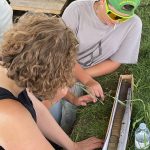
Tag Archives organic matter

Soil sampling for Prairie farmers: How to test for nutrients and avoid common mistakes
Agronomy Management: Take representative soil samples, choose the right depths, analyze key nutrients

Measuring the components of healthy soil in Alberta
Part 1 of 2: Soil health more than just its chemical properties, according to the Alberta Soil Health Benchmark Report
Cover cropping requires intention
Science Brief: Keep your goals in mind

Soil health benchmarking survey in Alberta
Researchers at the Chinook Applied Research Association’s Soil Health Lab have adapted a soil health assessment from Cornell University to evaluate Alberta soils

Ground Level: Mapping and managing eroded knolls

Saskatchewan farm making compost pellets for added fertilizer
After years of trials, Kyle Heggie thinks his system is crop-ready

Soil organic matter and carbon sequestration
Changes in cropping practices over time have significantly improved soil quality

Prairie soils’ organic carbon climbing
Data from StatCan and AAFC highlight positive changes made in agriculture since the 1980s

The biggest bang for your buck? Improve soil organic matter
Soil organic matter is vital for crop production and soil health — here’s what it does, why and how to improve it on hilltops and knolls

What’s the relationship between soil organic matter and crop insurance?
Adjusting insurance premiums based on soil quality factors is an idea now being discussed


